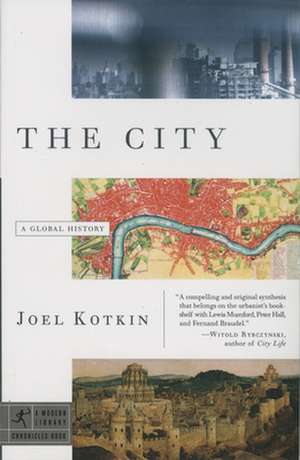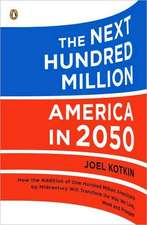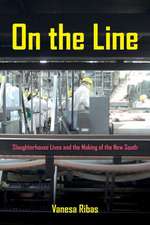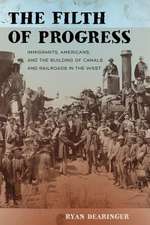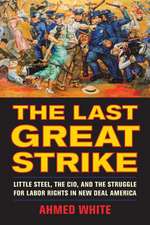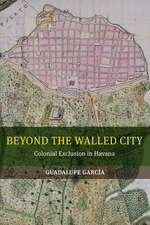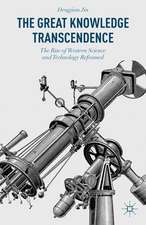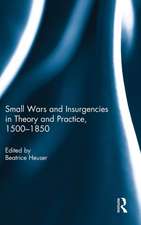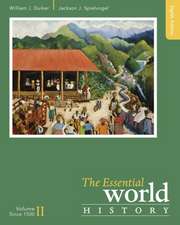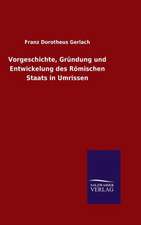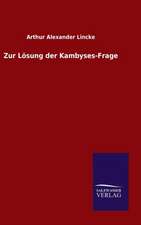The City: A Global History: Modern Library Chronicles
Autor Joel Kotkinen Limba Engleză Paperback – 30 sep 2006
Despite their infinite variety, all cities essentially serve three purposes: spiritual, political, and economic. Kotkin follows the progression of the city from the early religious centers of Mesopotamia, the Indus Valley, and China to the imperial centers of the Classical era, through the rise of the Islamic city and the European commercial capitals, ending with today’s post-industrial suburban metropolis.
Despite widespread optimistic claims that cities are “back in style,” Kotkin warns that whatever their form, cities can thrive only if they remain sacred, safe, and busy–and this is true for both the increasingly urbanized developing world and the often self-possessed “global cities” of the West and East Asia.
Looking at cities in the twenty-first century, Kotkin discusses the effects of developments such as shifting demographics and emerging technologies. He also considers the effects of terrorism–how the religious and cultural struggles of the present pose the greatest challenge to the urban future.
Truly global in scope, The City is a timely narrative that will place Kotkin in the company of Lewis Mumford, Jane Jacobs, and other preeminent urban scholars.
From the Hardcover edition.
Din seria Modern Library Chronicles
-
 Preț: 94.47 lei
Preț: 94.47 lei -
 Preț: 88.68 lei
Preț: 88.68 lei -
 Preț: 88.86 lei
Preț: 88.86 lei -
 Preț: 119.77 lei
Preț: 119.77 lei -
 Preț: 94.66 lei
Preț: 94.66 lei -
 Preț: 120.59 lei
Preț: 120.59 lei -
 Preț: 112.52 lei
Preț: 112.52 lei -
 Preț: 113.97 lei
Preț: 113.97 lei -
 Preț: 98.34 lei
Preț: 98.34 lei -
 Preț: 103.09 lei
Preț: 103.09 lei -
 Preț: 144.04 lei
Preț: 144.04 lei -
 Preț: 122.45 lei
Preț: 122.45 lei -
 Preț: 110.47 lei
Preț: 110.47 lei -
 Preț: 105.19 lei
Preț: 105.19 lei -
 Preț: 115.75 lei
Preț: 115.75 lei -
 Preț: 117.35 lei
Preț: 117.35 lei -
 Preț: 96.67 lei
Preț: 96.67 lei -
 Preț: 109.24 lei
Preț: 109.24 lei -
 Preț: 101.71 lei
Preț: 101.71 lei -
 Preț: 96.46 lei
Preț: 96.46 lei
Preț: 125.06 lei
Nou
Puncte Express: 188
Preț estimativ în valută:
23.93€ • 24.89$ • 19.76£
23.93€ • 24.89$ • 19.76£
Carte disponibilă
Livrare economică 24 martie-07 aprilie
Preluare comenzi: 021 569.72.76
Specificații
ISBN-13: 9780375756511
ISBN-10: 0375756515
Pagini: 218
Dimensiuni: 136 x 203 x 14 mm
Greutate: 0.19 kg
Editura: Modern Library
Seria Modern Library Chronicles
ISBN-10: 0375756515
Pagini: 218
Dimensiuni: 136 x 203 x 14 mm
Greutate: 0.19 kg
Editura: Modern Library
Seria Modern Library Chronicles
Notă biografică
Joel Kotkin is an Irvine senior fellow with the New America Foundation, which is based in Washington, D.C. He is the author of five books, including Tribes and The New Geography, both published by Random House. Kotkin is a frequent contributor to The Washington Post, The Wall Street Journal, Inc. magazine, The American Enterprise, and the Los Aneles Times “Opinion” section. He also serves as a senior fellow of the Newman Institute at Baruch College of the City University of New York and lectures at the Southern California Institute of Architecture. He lives in Valley Village, Los Angeles, with his wife, Mandy, and two daughters, Ariel and Hannah.
From the Hardcover edition.
From the Hardcover edition.
Extras
Chapter One
Sacred Origins
Long before the first cities rose in Mexico, China, or Europe, the essential patterns of urban life evolved slowly in the Middle East. Homo sapiens is said to have achieved its present basic physical evolutionary form twenty-five thousand to forty thousand years ago and spread throughout virtually the entire habitable planet, including the Americas and Australia, by around 8000 b.c.1
With the end of the last Ice Age, stock breeding and agriculture spread and with them a more sedentary way of life. Small villages developed as centers of artisanal activities and trade. The most advanced, what might be called “proto-cities,” appear to have developed most rapidly in a wide region that spread across the Syrian steppes, in Jericho, Iran, Egypt, and Turkey.2
Mesopotamia
This region—extending from the west coast of Palestine to the Nile Valley in Egypt to the Tigris and Euphrates rivers—constitutes what is called the “Fertile Crescent.” In the earliest period of recorded history, the farther one gets from this region, observed the German historian and archaeologist Werner Keller, “the deeper grows the darkness and signs of civilization and culture decrease. It is as if the people on the other continents were like children awaiting their awakening.”3
The alluvial basin between the Tigris and Euphrates rivers, in contemporary Iraq, proved an ideal environment for a precipitous leap to urbanism. Here, in the area later known to the Greeks as Mesopotamia, the arid desert was broken by reedy swamps, with waters overflowing with fish, and banks teeming with wildlife. Here, too, sprouted native grains, wheat and barley, which could be cultivated into reliable crops, rewarding the Neolithic farmer with the critical surpluses upon which the beginnings of urban civilization depended.4
The early city builders also faced many critical challenges in this fecund environment.5 Minerals, building stone, and timber were scarce. Rain was sporadic, and the rivers did not naturally, as in Egypt, inundate the large areas of dry land around them. As a result, the settlers in this region were forced to develop complex systems to irrigate their land.6
This huge effort required a moral and social order allowing for the intricate regulation of society and for a more dominating relationship toward nature, a major step away from the familial and clan relationships that had conditioned traditional village life for millennia. These earliest cities arose as the command posts for the carrying out of these functions. By modern or even classical standards, these urban agglomerations, the earliest of which can be traced as far back as 5000 b.c., were very small. Even by the third millennium, the powerful “metropolis” of Ur may have been no more than 150 acres and accommodated roughly twenty-four thousand people.7
The priestly class emerged as the primary organizers of the new urban order. It fell to them to articulate the divine principles placing man over nature, inculcate systems of worship, and regulate the activities of a large number of often unrelated people around complex communal tasks.
It is difficult, perhaps, to imagine in our current secular era the degree to which religion played a central role during most of urban history.8 Like the Catholic Church, or Buddhist, Muslim, Aztec, and Hindu priesthoods later on, the Sumerian ecclesiastics provided these ancient urban centers with a critical sense of order and continuity. Priests set the calendars that determined times for work, worship, and feasting for the entire population.9
Given the primacy of the priestly class, it is not surprising that temples celebrating the gods dominated the earliest primitive “skyline.” One of the earliest of these ziggurats, the shrine at Ur of Nannar, the Moon God, towered seventy feet over the flat Mesopotamian landscape.10 The high temple, suggests Mircea Eliade, constituted a “cosmic mountain” connected directly to the cosmos.11
The temple dominated what might be called the “inner city” of early Sumerian urban civilization. Within this area’s walls, the temple rose alongside the palace of the rulers and the homes of the principal citizens. These structures lent the whole district a sense of divine protection and security.12
The construction of these temples stimulated the commercial growth of early cities. In addition to slaves, ordinary workmen and skilled artisans participated in the construction of these first great structures, and many remained to service the needs of the priestly class. It was here as well, by roughly 3500 b.c., that the first recognizable systems of writing emerged, for both religious and commercial reasons.13
The priesthood held powerful sway over the material world. They controlled, on the gods’ behalf, much of the land in the community. The “divine household” was in charge of maintaining the canals as well as the storage and distribution of the all-important agricultural surplus. The Epic of Gilgamesh, the origins of which go back to Sumerian times, speaks of the “sacred storehouse” that is the “seat of Ishtar, the Goddess.”14
The temple also served as the first urban “shopping center,” offering in an open setting a vast array of goods ranging from oils and fats to reeds, asphalt, mats, and stones. The temple even owned factories that manufactured garments and utensils.
Regimes and dynasties would come and go, but only catastrophic change would sweep away the religious institutions. The shrines of Ur, for example, were repeatedly restored by those who conquered the city. The hierarchy of gods or ways of worshipping might shift over time, but the centrality of the religious function remained for millennia.15
This pattern also persisted well past the heyday of the Sumerians. Virtually all the successor societies that emerged from the region—from the Babylonians and Assyrians to the Persians—envisioned their cities as essentially sacred places, with intimate ties to the divine. Babylon, the greatest of the Mesopotamian cities, was called Babi-ilani, or “the Gate of the Gods,” the place from which the divinities were believed to have descended to earth.16
Egypt
It is not clear whether or not Mesopotamia directly shaped the early Egyptian civilization, but the latter may well have been, as the historian Grahame Clark has noted, “fertilized from Sumerian seeds.”17 As in the early Mesopotamian cities, the first Egyptian conurbations rested economically on the critical agricultural surplus. The average Egpytian peasant produced, according to some estimates, three times as much food as he needed.18
But there were also many differences between these two early civilizations. In Egypt, control lay in the hands of the pharaoh, who claimed to be a god himself. The civil servants, rather than administering the irrigation and surplus economy for the benefit of the gods or a king, did so for an individual personifying both at the same time.19 The intimate relationship between the civic identity and the priesthood, so critical in the evolution of Mesopotamian cities, was not nearly as pronounced.
For this, among other reasons, early Egypt does not serve us well as a primary focus on the origins of urbanism. Mesopotamian society revolved around city life and a permanent set of religious structures. Egyptian life centered around the royal court.20 Administrators, priests, artisans, workmen, and their slaves identified themselves not with an urban place, but with the personage of the pharaoh. If the dynasty moved, as it sometimes did, so did the priesthood and the government.21
Of course, a civilization as great and as long-lasting as Egypt’s still produced some significant cities. Thebes, for example, was praised in a hymn in the fifteenth century b.c.: “She is called city; all others are under her shadow, to magnify themselves through her.”22 In the world before the rise of cities such as Babylon, Egyptian cities had populations as large as, or even larger than, their Mesopotamian counterparts.23
Yet despite this, even great cities like Memphis or Thebes never assumed the independent identity, economic dynamism, and divine sta- tus associated with the various Sumerian urban centers. For one thing, Egypt’s prolonged periods of universal order—in sharp contrast with unruly, fragmented Mesopotamia—did not promote the development of self-enclosed walled cities. Lack of competitive trade also slowed the development of a marketplace economy. Egypt would remain a civilization whose greatest achievement, the Pyramids, was constructed to house the dead, not provide an environment for the living. “Everything else in Egypt seemed to have found durable form,” observed the urban historian Lewis Mumford, “except the city.”24
India and China
What Egypt did share with urban Mesopotamia was the religious focus of its civilization. Similarly, Harappa and Mohenjo-daro, constructed around 2500 b.c. in the present Pakistani provinces of Sind and Punjab, also placed monumental religious architecture at their core. As in Sumer, with which they maintained a trading relationship,25 theocrats played a dominating role in the running of the city. Much of the worship seems to have been focused on the Mother Goddess, an important feature as well to the fertility cults of the Middle East.26
This religious orientation also applied to cities that had little or no direct connection with the Fertile Crescent. In China, around 1700 b.c., the Shang dynasty rulers placed temples at the center of their urban spaces. Priests or shamans played a critical role not only in divine matters, but in administration as well.
From the Shang as well we see the pattern of worship of ancestors that would play an important role27 in the evolution of China’s enduring and continuous model of urban civilization.28 Religious devotion and practice was critical to the raising of mass conscriptions of peasant labor needed to build walls and city foundations. As an ancient Chinese poem has it:
They set their plumb-lines vertical
They lashed the boards to hold [the earth]
And raised the Temple [of the Ancestors] on the cosmic pattern.29
Great cities throughout most of classical Chinese history would be dominated by adherence to the “cosmic pattern.” Temples of the gods and ancestors, along with the palaces of the rulers, stood at the center of the city. Through propitiating these deities, the rulers hoped to regulate both the natural universe and the human one.30
The Americas
The primacy of the religious role was, if anything, even more striking in the earliest cities of the faraway Americas—places unlikely to have contact with either the Mesopotamian or the Chinese urban center. Like their counterparts in Mesopotamia and China, the first cities built in Mexico, Peru, and other early civilizations of the Americas also placed religious structures at the heart of their metropolitan centers.31 Over a millennium before the rise of Tenochtitlán, Teotihuacán, a short drive from contemporary Mexico City, was home to over a hundred temples along its main avenue, the Street of the Dead.
To the south as well, among the Maya and in Peru, early cities center around temples, religious ceremonies, and regulations. On the northern highlands of Peru, the Chavin builders of the early first millennium b.c. constructed massive religious structures that represented both a major cultural advance and a foundation for future urban civilization on the west coast of South America.32 Roughly two thousand years later, the Incas also built temples in the middle of their cities. Incan society rested on the notion that their rulers were gods and their capital, Cuzco, constituted “the navel of the world.”33
Historians, amateur or otherwise, have tried to explain the similarities among the religious origins of ancient cities by insisting on some vague transmission of culture across vast distances. Perhaps a more fruitful approach would be to assume, as the American historian T. R. Fehrenbach notes, the existence of a “psychic unity” among early city builders in all parts of the world.34
From the Hardcover edition.
Sacred Origins
Long before the first cities rose in Mexico, China, or Europe, the essential patterns of urban life evolved slowly in the Middle East. Homo sapiens is said to have achieved its present basic physical evolutionary form twenty-five thousand to forty thousand years ago and spread throughout virtually the entire habitable planet, including the Americas and Australia, by around 8000 b.c.1
With the end of the last Ice Age, stock breeding and agriculture spread and with them a more sedentary way of life. Small villages developed as centers of artisanal activities and trade. The most advanced, what might be called “proto-cities,” appear to have developed most rapidly in a wide region that spread across the Syrian steppes, in Jericho, Iran, Egypt, and Turkey.2
Mesopotamia
This region—extending from the west coast of Palestine to the Nile Valley in Egypt to the Tigris and Euphrates rivers—constitutes what is called the “Fertile Crescent.” In the earliest period of recorded history, the farther one gets from this region, observed the German historian and archaeologist Werner Keller, “the deeper grows the darkness and signs of civilization and culture decrease. It is as if the people on the other continents were like children awaiting their awakening.”3
The alluvial basin between the Tigris and Euphrates rivers, in contemporary Iraq, proved an ideal environment for a precipitous leap to urbanism. Here, in the area later known to the Greeks as Mesopotamia, the arid desert was broken by reedy swamps, with waters overflowing with fish, and banks teeming with wildlife. Here, too, sprouted native grains, wheat and barley, which could be cultivated into reliable crops, rewarding the Neolithic farmer with the critical surpluses upon which the beginnings of urban civilization depended.4
The early city builders also faced many critical challenges in this fecund environment.5 Minerals, building stone, and timber were scarce. Rain was sporadic, and the rivers did not naturally, as in Egypt, inundate the large areas of dry land around them. As a result, the settlers in this region were forced to develop complex systems to irrigate their land.6
This huge effort required a moral and social order allowing for the intricate regulation of society and for a more dominating relationship toward nature, a major step away from the familial and clan relationships that had conditioned traditional village life for millennia. These earliest cities arose as the command posts for the carrying out of these functions. By modern or even classical standards, these urban agglomerations, the earliest of which can be traced as far back as 5000 b.c., were very small. Even by the third millennium, the powerful “metropolis” of Ur may have been no more than 150 acres and accommodated roughly twenty-four thousand people.7
The priestly class emerged as the primary organizers of the new urban order. It fell to them to articulate the divine principles placing man over nature, inculcate systems of worship, and regulate the activities of a large number of often unrelated people around complex communal tasks.
It is difficult, perhaps, to imagine in our current secular era the degree to which religion played a central role during most of urban history.8 Like the Catholic Church, or Buddhist, Muslim, Aztec, and Hindu priesthoods later on, the Sumerian ecclesiastics provided these ancient urban centers with a critical sense of order and continuity. Priests set the calendars that determined times for work, worship, and feasting for the entire population.9
Given the primacy of the priestly class, it is not surprising that temples celebrating the gods dominated the earliest primitive “skyline.” One of the earliest of these ziggurats, the shrine at Ur of Nannar, the Moon God, towered seventy feet over the flat Mesopotamian landscape.10 The high temple, suggests Mircea Eliade, constituted a “cosmic mountain” connected directly to the cosmos.11
The temple dominated what might be called the “inner city” of early Sumerian urban civilization. Within this area’s walls, the temple rose alongside the palace of the rulers and the homes of the principal citizens. These structures lent the whole district a sense of divine protection and security.12
The construction of these temples stimulated the commercial growth of early cities. In addition to slaves, ordinary workmen and skilled artisans participated in the construction of these first great structures, and many remained to service the needs of the priestly class. It was here as well, by roughly 3500 b.c., that the first recognizable systems of writing emerged, for both religious and commercial reasons.13
The priesthood held powerful sway over the material world. They controlled, on the gods’ behalf, much of the land in the community. The “divine household” was in charge of maintaining the canals as well as the storage and distribution of the all-important agricultural surplus. The Epic of Gilgamesh, the origins of which go back to Sumerian times, speaks of the “sacred storehouse” that is the “seat of Ishtar, the Goddess.”14
The temple also served as the first urban “shopping center,” offering in an open setting a vast array of goods ranging from oils and fats to reeds, asphalt, mats, and stones. The temple even owned factories that manufactured garments and utensils.
Regimes and dynasties would come and go, but only catastrophic change would sweep away the religious institutions. The shrines of Ur, for example, were repeatedly restored by those who conquered the city. The hierarchy of gods or ways of worshipping might shift over time, but the centrality of the religious function remained for millennia.15
This pattern also persisted well past the heyday of the Sumerians. Virtually all the successor societies that emerged from the region—from the Babylonians and Assyrians to the Persians—envisioned their cities as essentially sacred places, with intimate ties to the divine. Babylon, the greatest of the Mesopotamian cities, was called Babi-ilani, or “the Gate of the Gods,” the place from which the divinities were believed to have descended to earth.16
Egypt
It is not clear whether or not Mesopotamia directly shaped the early Egyptian civilization, but the latter may well have been, as the historian Grahame Clark has noted, “fertilized from Sumerian seeds.”17 As in the early Mesopotamian cities, the first Egyptian conurbations rested economically on the critical agricultural surplus. The average Egpytian peasant produced, according to some estimates, three times as much food as he needed.18
But there were also many differences between these two early civilizations. In Egypt, control lay in the hands of the pharaoh, who claimed to be a god himself. The civil servants, rather than administering the irrigation and surplus economy for the benefit of the gods or a king, did so for an individual personifying both at the same time.19 The intimate relationship between the civic identity and the priesthood, so critical in the evolution of Mesopotamian cities, was not nearly as pronounced.
For this, among other reasons, early Egypt does not serve us well as a primary focus on the origins of urbanism. Mesopotamian society revolved around city life and a permanent set of religious structures. Egyptian life centered around the royal court.20 Administrators, priests, artisans, workmen, and their slaves identified themselves not with an urban place, but with the personage of the pharaoh. If the dynasty moved, as it sometimes did, so did the priesthood and the government.21
Of course, a civilization as great and as long-lasting as Egypt’s still produced some significant cities. Thebes, for example, was praised in a hymn in the fifteenth century b.c.: “She is called city; all others are under her shadow, to magnify themselves through her.”22 In the world before the rise of cities such as Babylon, Egyptian cities had populations as large as, or even larger than, their Mesopotamian counterparts.23
Yet despite this, even great cities like Memphis or Thebes never assumed the independent identity, economic dynamism, and divine sta- tus associated with the various Sumerian urban centers. For one thing, Egypt’s prolonged periods of universal order—in sharp contrast with unruly, fragmented Mesopotamia—did not promote the development of self-enclosed walled cities. Lack of competitive trade also slowed the development of a marketplace economy. Egypt would remain a civilization whose greatest achievement, the Pyramids, was constructed to house the dead, not provide an environment for the living. “Everything else in Egypt seemed to have found durable form,” observed the urban historian Lewis Mumford, “except the city.”24
India and China
What Egypt did share with urban Mesopotamia was the religious focus of its civilization. Similarly, Harappa and Mohenjo-daro, constructed around 2500 b.c. in the present Pakistani provinces of Sind and Punjab, also placed monumental religious architecture at their core. As in Sumer, with which they maintained a trading relationship,25 theocrats played a dominating role in the running of the city. Much of the worship seems to have been focused on the Mother Goddess, an important feature as well to the fertility cults of the Middle East.26
This religious orientation also applied to cities that had little or no direct connection with the Fertile Crescent. In China, around 1700 b.c., the Shang dynasty rulers placed temples at the center of their urban spaces. Priests or shamans played a critical role not only in divine matters, but in administration as well.
From the Shang as well we see the pattern of worship of ancestors that would play an important role27 in the evolution of China’s enduring and continuous model of urban civilization.28 Religious devotion and practice was critical to the raising of mass conscriptions of peasant labor needed to build walls and city foundations. As an ancient Chinese poem has it:
They set their plumb-lines vertical
They lashed the boards to hold [the earth]
And raised the Temple [of the Ancestors] on the cosmic pattern.29
Great cities throughout most of classical Chinese history would be dominated by adherence to the “cosmic pattern.” Temples of the gods and ancestors, along with the palaces of the rulers, stood at the center of the city. Through propitiating these deities, the rulers hoped to regulate both the natural universe and the human one.30
The Americas
The primacy of the religious role was, if anything, even more striking in the earliest cities of the faraway Americas—places unlikely to have contact with either the Mesopotamian or the Chinese urban center. Like their counterparts in Mesopotamia and China, the first cities built in Mexico, Peru, and other early civilizations of the Americas also placed religious structures at the heart of their metropolitan centers.31 Over a millennium before the rise of Tenochtitlán, Teotihuacán, a short drive from contemporary Mexico City, was home to over a hundred temples along its main avenue, the Street of the Dead.
To the south as well, among the Maya and in Peru, early cities center around temples, religious ceremonies, and regulations. On the northern highlands of Peru, the Chavin builders of the early first millennium b.c. constructed massive religious structures that represented both a major cultural advance and a foundation for future urban civilization on the west coast of South America.32 Roughly two thousand years later, the Incas also built temples in the middle of their cities. Incan society rested on the notion that their rulers were gods and their capital, Cuzco, constituted “the navel of the world.”33
Historians, amateur or otherwise, have tried to explain the similarities among the religious origins of ancient cities by insisting on some vague transmission of culture across vast distances. Perhaps a more fruitful approach would be to assume, as the American historian T. R. Fehrenbach notes, the existence of a “psychic unity” among early city builders in all parts of the world.34
From the Hardcover edition.
Recenzii
Advance Praise for The City
“A compelling and original synthesis that belongs on the urbanist’s bookshelf with Lewis Mumford, Peter Hall, and Fernand Braudel.”
–Witold Rybczynski, Martin & Margy Meyerson Professor of Urbanism, School of Design, professor of Real Estate, Wharton School
“No one knows more about cities than Joel Kotkin, and has more to teach us about them. In The City, Kotkin takes us on a brisk and invigorating tour of cities from the Babylon of ancient times to the burgeoning exurbs of today. It is impossible not to learn a lot from this book.”
–Michael Barone, senior writer, U.S. News & World Report, and co-author of The Almanac of American Politics
“If you want to understand why the future of American and European cities is mixed at best, if you want to understand why George Bush won the 2004 election, you need to read Joel Kotkin’s account of how and why cities have developed and declined.”
–Fred Siegel, author of Prince of the City: Giuliani, New York and the Genius of American Life, senior fellow at the Progressive Policy Institute
“Unique and powerful insights into urban life . . . This book is a great read.”
–Bob Lanier, Mayor of Houston, 1992-1998
From the Hardcover edition.
“A compelling and original synthesis that belongs on the urbanist’s bookshelf with Lewis Mumford, Peter Hall, and Fernand Braudel.”
–Witold Rybczynski, Martin & Margy Meyerson Professor of Urbanism, School of Design, professor of Real Estate, Wharton School
“No one knows more about cities than Joel Kotkin, and has more to teach us about them. In The City, Kotkin takes us on a brisk and invigorating tour of cities from the Babylon of ancient times to the burgeoning exurbs of today. It is impossible not to learn a lot from this book.”
–Michael Barone, senior writer, U.S. News & World Report, and co-author of The Almanac of American Politics
“If you want to understand why the future of American and European cities is mixed at best, if you want to understand why George Bush won the 2004 election, you need to read Joel Kotkin’s account of how and why cities have developed and declined.”
–Fred Siegel, author of Prince of the City: Giuliani, New York and the Genius of American Life, senior fellow at the Progressive Policy Institute
“Unique and powerful insights into urban life . . . This book is a great read.”
–Bob Lanier, Mayor of Houston, 1992-1998
From the Hardcover edition.
